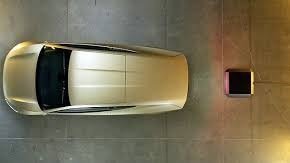The Future of Driving is Here: Unplugging Your Electric Vehicle for Good
The electric vehicle (EV) revolution is well underway, with more and more of us making the switch to cleaner, greener transportation. But what if we could take the convenience of EVs one step further? What if we could ditch the cables and charging stations altogether?
This isn’t science fiction. This is the promise of wireless EV charging, a technology that is rapidly moving from the realm of research and development to real-world application. Imagine simply parking your car in your garage, at the supermarket, or even driving down the highway, and having it charge automatically. This is the future of driving, and it’s closer than you think.
How Does it Work? The Magic of Inductive Charging
Wireless EV charging, also known as inductive charging, works on a principle that’s been around for over a century: electromagnetic induction. It’s the same technology that powers your wireless smartphone charger, but on a much larger scale.
Here’s a simplified breakdown:
- The Charging Pad: A charging pad, containing a coil of wire, is installed on the ground, either on the surface or embedded within it.
- Creating a Magnetic Field: When electricity from the grid flows through this coil, it creates an alternating magnetic field.
- The Vehicle Receiver: A second coil is installed on the underside of the EV.
- Power Transfer: When the vehicle’s receiver coil comes into range of the charging pad’s magnetic field, the field induces an electric current in the receiver coil.
- Charging the Battery: This induced current is then converted from alternating current (AC) to direct current (DC) and used to charge the vehicle’s battery.
The process is seamless and automatic. All the driver has to do is park in the right spot, and the charging begins.

The Pros and Cons: A Balanced View
Like any emerging technology, wireless EV charging has its own set of advantages and challenges.
The Upside:
- Unparalleled Convenience: The most obvious benefit is the sheer convenience. No more fumbling with heavy, dirty cables, especially in bad weather. Just park and walk away.
- Enhanced Safety: With no exposed electrical conductors, the risk of electric shock is eliminated. This also reduces the potential for vandalism and damage to charging equipment.
- Increased Durability: The lack of physical connectors means less wear and tear on both the vehicle’s charging port and the charging infrastructure itself.
- Aesthetic Appeal: Wireless charging systems can be seamlessly integrated into their surroundings, eliminating the visual clutter of traditional charging stations.
- The Autonomous Dream: For the coming wave of autonomous vehicles, wireless charging is a perfect match. A self-driving car can simply navigate to a wireless charging spot and top up its battery without any human intervention.
The Challenges:
- Higher Initial Cost: The technology is still new, and the cost of installing a wireless charging system, both in the vehicle and on the ground, is currently higher than for a traditional wired charger.
- Efficiency Losses: While the technology has improved significantly, there is still a small amount of energy lost during the wireless transfer. However, the latest systems can achieve efficiencies of over 90%, which is comparable to many wired chargers.
- Standardization Issues: As with many new technologies, there isn’t yet a single, universal standard for wireless EV charging. This means that a vehicle from one manufacturer might not be compatible with a charging pad from another. However, industry bodies like the Society of Automotive Engineers (SAE) are working to establish a common standard.
- Slower Charging Speeds: At present, the power output of most wireless charging systems is lower than that of the fastest DC fast chargers. This means that a full charge will take longer. However, research is underway to develop high-power wireless charging systems that can rival their wired counterparts.
- Alignment is Key: For the most efficient charging, the vehicle’s receiver coil needs to be properly aligned with the charging pad on the ground. While this might seem like a challenge, many systems now include guidance systems to help the driver park in the optimal position.
The Australian Scene: Charging on the Move
Australia is not being left behind in the wireless charging race. In fact, a world-first project led by Swinburne University of Technology is looking to take the technology to the next level.
With the help of a $3 million government grant, the project is developing a prototype for dynamic wireless charging on regional roads. The idea is to embed charging coils into the road surface, allowing heavy vehicles like trucks and buses to charge as they drive.
This could be a game-changer for the Australian transport industry, where long distances and heavy loads have been major roadblocks to the adoption of electric trucks. By allowing vehicles to top up their batteries on the move, dynamic wireless charging could eliminate range anxiety and make electric transport a viable option for even the most demanding routes.
The Future is Wireless: A Glimpse of What’s to Come
The future of wireless EV charging is incredibly exciting. Here are just a few of the possibilities that are on the horizon:
- Dynamic Charging for All: While the initial focus of dynamic charging is on heavy vehicles, the technology could eventually be rolled out to all EVs. Imagine a future where your car is constantly charging as you drive, making long road trips a breeze.
- Vehicle-to-Everything (V2X): Wireless charging could also enable V2X technology, which allows your EV to not only draw power from the grid but also to feed it back. This could help to stabilize the grid, and even allow you to power your home with your car during a blackout.
- Seamless Integration with Smart Cities: As our cities become smarter and more connected, wireless EV charging will play a key role. It will be integrated into parking garages, public spaces, and even our homes, making charging a seamless and invisible part of our daily lives.
Conclusion: The End of the Plug?
While there are still some challenges to overcome, the momentum behind wireless EV charging is undeniable. The convenience, safety, and potential for a truly automated and seamless charging experience are simply too compelling to ignore.
It may be some time before we see wireless charging on every street corner, but the technology is here, it’s improving rapidly, and it’s set to fundamentally change the way we think about fueling our vehicles. The days of the charging cable may be numbered. The future of driving is wireless.
References
- Nissan Motor Corporation Global Website. (n.d.). Wireless Charging System. Retrieved from https://www.nissan-global.com/EN/INNOVATION/TECHNOLOGY/ARCHIVE/WCS/
- Wikipedia. (2024). Inductive charging. Retrieved from https://en.wikipedia.org/wiki/Inductive_charging
- Plugless Power. (n.d.). Meet Plugless | The Wireless EV Charging Station. Retrieved from https://pluglesspower.com/
- Octopus Electroverse. (2023, June). What is wireless EV charging?. Retrieved from https://electroverse.com/community/ev-blogs-and-guides/what-is-wireless-ev-charging
- Swinburne University of Technology. (2024, February 16). World first project could see EVs charge wirelessly on the road. Retrieved from https://www.swinburne.edu.au/news/2024/02/World-first-project-could-see-EVs-charge-wirelessly-on-the-road/
- EV PowerHouse. (2023, May 3). The impact of Wireless EV Charging on the EV industry. Retrieved from https://evpowerhouse.com.au/blog/wireless-ev-charging/
- Live Science. (2024, March 21). Experimental wireless EV charger is just as fast as a superfast wired plug, scientists say. Retrieved from https://www.livescience.com/technology/electric-vehicles/experimental-wireless-ev-charger-100-kw-is-just-as-fast-as-a-superfast-wired-plug
- The Driven. (2024, February 22). Australia plans “world-first” drive-by wireless charging for electric trucks. Retrieved from https://thedriven.io/2024/02/22/australia-plans-world-first-drive-by-wireless-charging-for-electric-trucks/
